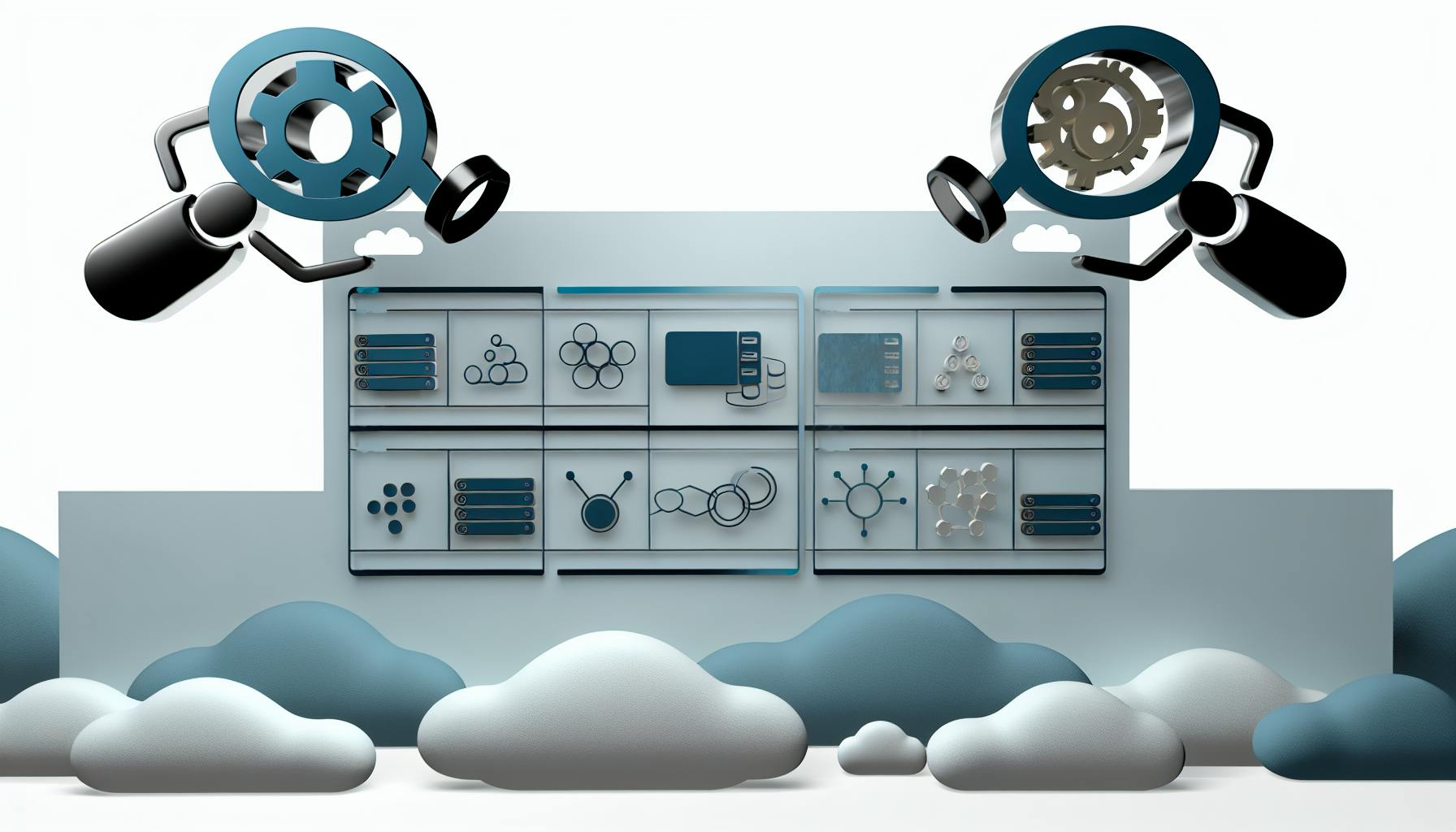In today's fast-paced digital landscape, businesses need to embrace digital transformation solutions to ensure robust data observability. This essential guide dives into how data observability tools help monitor, analyze, and optimize your data systems in real-time, enhancing system reliability, performance, and actionable intelligence. Discover the challenges and solutions in implementing effective data observability for your digital transformation projects, along with real-world case studies showcasing its impact.
- Key Components of Data Observability: Discovery, Profiling, Validation, Actionable Intelligence
- Benefits: Enhances system reliability, drives performance optimization, generates actionable intelligence
- Challenges: Managing the volume, variety, and velocity of data; navigating complex multi-tier architectures; ensuring unified data context; moving beyond manual and reactive approaches
- Solutions: Advanced tools like Era Software, Monte Carlo, and Observe for monitoring, analyzing, and taking action
- Implementation Steps: Determine readiness, start with a pilot, choose the right tools, drive adoption, and measure results continuously
By understanding and applying data observability, businesses can make informed decisions, optimize operations, and stay competitive in a digital-first world.
Definition and Key Components
Data observability is all about keeping an eye on your data to make sure it's in good shape and doing what it's supposed to do. It involves:
- Discovery - Finding out where your data is, what's in it, who uses it, and how it moves around.
- Profiling - Keeping tabs on your data all the time, checking how much there is, how it's spread out, if it's all there, and if it's coming in on time.
- Validation - Making sure your data matches up with what you expect, like following rules and being in the right format, and spotting anything odd.
- Actionable Intelligence - Giving you alerts, pictures of your data, and deep dives into problems so you can fix things fast.
These parts work together to give you a full picture of your data and make sure it's ready for use in things like reports, analytics, and apps.
Difference from Data Monitoring and Quality
While monitoring looks at the health of your systems and data quality checks if individual pieces of data are right, data observability goes wider. It looks at the whole journey of your data, combining bits of monitoring, quality checks, and analysis to spot issues and make sure data is delivered reliably for business needs.
For instance, monitoring might tell you if a data process stops working. Data quality checks might point out if some data is wrong. Data observability gives you a big-picture view, letting you know if there's a drop in the total data getting through, which could mean a bigger problem. It finds patterns and oddities to check if data is ready for use before it gets to reports or AI, making sure it's reliable and error-free.
In this way, data observability doesn't replace monitoring and quality checks but adds to them. It checks across systems and focuses on making sure data is good to go from start to finish, ensuring it's trustworthy for analytics. It helps make your data 'observable' in terms of being ready and right for business use along its whole path.
The Crucial Role of Data Observability in Digital Transformation
Data observability is super important for businesses that want to keep up with the digital world. It's like having a superpower that lets you see exactly what's happening with your data and systems all the time. This helps companies make sure everything runs smoothly, fix problems fast, and make smart decisions.
Improving System Reliability
With everything moving online and getting more complicated, even a small glitch can cause big problems. Data observability helps tech teams find and fix these glitches fast by:
- Keeping an eye on important system and data stuff in real-time
- Sending out warnings when things aren't looking right
- Helping find the root of the problem quickly
- Showing everything you need to know in one easy-to-understand view
This means less downtime and happier customers and employees.
Driving Performance Optimization
Data observability isn't just about fixing problems. It also helps businesses make their systems faster and more efficient by:
- Spotting where things are getting jammed up
- Figuring out exactly what resources are needed
- Helping decide when to beef up systems to handle more traffic
- Making data flow better and faster
This leads to smoother and quicker digital services for everyone.
Generating Actionable Intelligence
The information gathered from observability tools isn't just for fixing and tuning systems. It also gives businesses valuable insights that can help them come up with new ideas and improve what they offer. For example, companies can:
- Find new ways to serve their customers digitally
- Spot what customers are struggling with
- Use data in smart models for better predictions
- Create unique services that stand out
In short, data observability helps businesses stay sharp and make informed decisions in a digital-first world. It's key for staying competitive and keeping customers happy.
Challenges in Achieving Effective Data Observability
As more companies go digital, making sure we can keep an eye on all our data is getting tougher. Here are some big hurdles we need to jump over:
The Sheer Volume, Variety, and Velocity of Data
Imagine trying to keep track of water drops in a waterfall. That's what dealing with today's data is like. We've got:
- Huge amounts of data that are hard to handle
- Lots of different kinds of data coming from all over the place
- Data that moves super fast, leaving little time to catch mistakes
Handling all this requires smart tools that can manage and analyze data well.
Complex, Multi-Tier Architectures
Our computer systems are like big, complicated puzzles with pieces spread out everywhere - in the office, in the cloud, and in between. This makes it hard to see the whole picture, especially when:
- We use a mix of old and new tech that needs to work together
- Data goes through many steps before it gets where it's going
- We break tasks into smaller jobs spread across different services
Figuring out where problems start in this maze can be really tough.
Lack of Unified Data Context
When our tools don't talk to each other, we miss the big picture. Problems include:
- Looking at data in isolation, which misses how issues affect everything
- Keeping logs and metrics separate, making it hard to connect dots
- Focusing too much on machines, and not enough on the data itself
Without seeing how everything connects, fixing problems is much harder.
Manual and Reactive Approaches
Even with tools to help, many teams wait for problems to happen before they fix them. But with everything moving so fast, this just doesn't work anymore. We need smart systems that can spot and fix issues automatically, not just manual checks.
To get past these challenges, we need advanced tools that give us a clear view of everything, spot problems on their own, and offer smart suggestions. This way, we can handle the complexity of today's data and keep moving forward with confidence.
Digital Transformation Solutions for Data Observability
Monitoring, Analyzing, and Taking Action
There are special tools designed to keep an eye on, study, and automatically handle issues within the huge and complex networks that handle our data. Some of the top tools include:
- Era Software - This tool can predict problems before they happen and automatically fix them by working directly with the data system.
- Monte Carlo - It looks closely at data to make sure it's being delivered correctly and alerts you if something's off. It can also track data across different systems.
- Observe - It takes in all kinds of data measurements and uses smart tech to find patterns and the root cause of issues.
These tools are great for IT teams to have a complete view and control over their data systems.
Reliability
Data observability makes systems more reliable by:
- Predictive monitoring - Constantly checking data to find issues before they cause trouble.
- Automated incident response - Automatically fixing or lessening problems as soon as they're detected.
- Anomaly detection - Spotting when data isn't behaving as expected, which could mean there's an issue.
This means teams can find and fix problems faster, making everything run more smoothly.
Scalability
Data observability helps systems grow by:
- Friction elimination - Finding and fixing slow spots in data movement.
- Design-to-cost analysis - Making sure money spent on data systems matches what's actually needed.
- Data discovery - Keeping track of all the data across systems to help with combining and moving data.
These features assist IT teams in expanding data handling in a cost-effective way.
Cost Optimization
Data observability helps save money by:
- Utilization insights - Pointing out where data systems are being underused or not used at all.
- Labor reduction - Reducing the need for manual checks through automatic problem detection and fixing.
- Strategic analysis - Helping decide if current data tools are worth the investment or if new ones are needed.
By making data systems more efficient, teams can do more with their budgets.
sbb-itb-9890dba
Implementing Data Observability
To put data observability into action in your digital transformation projects, you need a solid plan. Here's how to do it step by step:
Determine Readiness
First off, check if your organization is ready for data observability. Look at:
- People - Make sure your team knows how to use observability tools. Train them if necessary.
- Processes - Check your current data handling methods. See where observability fits and how it can help.
- Technology - Review what data tools and systems you already have. Plan how to add observability to the mix.
Start with a Pilot
Begin with a small test on an important system or business area. This lets you:
- See how well it works with your existing tools
- Check the benefits
- Teach your team about observability
- Fine-tune your approach
Pick areas to test that could really benefit, like improving customer service or making more money.
Choose the Right Tools
Pick observability tools that offer:
- Flexibility - They should work with what you have and be easy to adjust.
- Powerful analytics - Look for features like machine learning and good data management.
- Actionability - The tool should help improve data quality and processes.
Make sure any tool fits with your current setup and can grow with your needs.
Drive Adoption & Usability
Get everyone on board with using observability:
- Communicate benefits - Explain how it can make things faster and reduce problems.
- Incentivize usage - Tie it to job performance.
- Simplify interfaces - Make it easy for everyone to use.
- Automate workflows - Help people take action without hassle.
Start Simple, Then Expand
After the pilot is a success, introduce observability in stages:
- Instrument critical data - Start with the most important data.
- Layer in more use cases - Add more systems and data types over time.
- Expand to more teams - Bring in other departments like BI and data science.
Measure Results Continuously
Keep track of the benefits, like:
- Faster problem resolution - Fixing issues quicker.
- Improved data quality - Fewer mistakes.
- Increased productivity - Getting more done.
- Cost savings - Spending less on monitoring tools.
Show the real value of data observability with clear numbers.
Keep Evolving
Think of data observability as an ongoing effort:
- Refine metrics and alerts - Make sure you're getting useful info.
- Upgrade tools - Stay up to date with new technology.
- Identify new use cases - Find more ways to use observability.
- Drive cultural adoption - Encourage everyone to make data-driven decisions.
Starting small, picking the right tools, and getting everyone involved can make data observability really valuable. Use clear measurements to show its success.
Case Studies
Data observability helps businesses understand their systems and data better. Here are a few stories of companies using data observability to improve their operations:
Financial Services Company
A big company in finance wanted to update its data system to make analytics faster and improve product development. They started using a data observability platform that allowed them to:
- Find and manage data across different places, both in their office and in the cloud
- Spot data problems like errors or system failures
- Fix issues automatically to get things back on track quickly
Results:
- Cut down the time to fix problems by half
- Made it easier and faster to develop new products by giving easy access to good data
- Saved 40% on costs by not using resources they didn't need
Retail Chain
A big store chain wanted to make its supply chain better. They used data observability to:
- Keep an eye on important data from stores, warehouses, and suppliers
- Watch how resources are used to find where things could be better
- Study shipping delays that were holding them back
Outcomes:
- Lowered shipping costs by 10%
- Started a 2-day delivery service
- Increased warehouse space without spending more
Ridesharing App
A ridesharing app had trouble with data causing wrong ETAs and service outages. They used data observability to:
- Check ride data for accuracy and completeness
- Set rules for data quality to notice when something's off
- Send alerts for missing data to fix problems faster
Impacts:
- More rides were completed, up by 5%
- Complaints about wrong ETAs dropped by 60%
- Made the app more reliable and always available
These stories show how data observability can help different kinds of businesses by making sure they have reliable and useful information. Being able to watch, study, and act on data is crucial for keeping systems working well, growing without spending too much, and saving money.
Conclusion
Data observability is super important for companies trying to make the most of digital tools and processes. It's like having eyes on your data all the time, making sure everything works as it should. Here's how it helps:
- Make things more reliable: It uses smart tech to spot problems early and fix them fast. This means less downtime and smoother operations.
- Help systems grow: It points out where data gets stuck and how to fix it, making it easier for your business to expand without big headaches.
- Save money: By keeping a close eye on how data systems are used, it helps you spend money wisely, focusing on what really matters for growth.
In short, data observability is key for any business looking to improve through digital means. It gives you a clear view of your data, helping to prevent surprises that could slow you down.
With today's complex data setups, just trying to keep track manually won't cut it. Tools designed for data observability use smart analytics to watch over your data 24/7, catching issues before they impact customers.
As businesses grow and change quickly, having a good grip on your data becomes even more crucial. Making observability part of your data practices means you're ready to adapt and improve, keeping ahead in a fast-moving world.
Related Questions
What is observability in digital transformation?
Observability in digital transformation is about keeping an eye on how well digital systems are working. It lets you see if apps, servers, and data pathways are healthy by checking data like numbers, logs, and timelines. This helps tech teams find and fix problems quickly, keeping everything running smoothly. Observability tools can also predict issues before they happen, making it easier to keep digital services up and running.
How do you implement data observability?
Here's how to start using data observability:
- Pick a tool that can find, track, and check your data, and make sure it works with your current setup.
- Connect it to your data sources, like databases and data streams. Gather important information.
- Set up alerts for when data looks weird. This helps you act fast.
- Use diagrams to show how data moves and check if anything's missing.
- Look at data use and flow to make things more efficient. Fix small problems before they get big.
- Regularly check how trustworthy your data is. Share findings to make improvements.
- Where possible, use automation to fix issues without human help.
- Encourage everyone to focus on keeping data reliable and improving services.
What is observability solution?
An observability solution helps you see and understand everything about your digital systems by gathering and linking data like numbers, events, logs, and timelines. It spots problems, figures out why they're happening, and suggests how to fix them quickly. Good solutions can handle lots of data, show it in easy-to-understand ways, and work well with other tools you're using. They help make sure your digital services are always available, even when things get complicated.
Why is data management important in digital transformation?
Good data management is key for digital transformation because it makes sure data is easy to get to and use. This helps speed up making new apps and analyzing data. It also gets rid of data silos, making one reliable source for all your data. With good practices, your data stays safe and meets rules, helping your digital projects grow. Sharing data widely sparks new ideas and automation. In short, managing your data well makes your work more efficient, saves money, and prepares you for the future.



